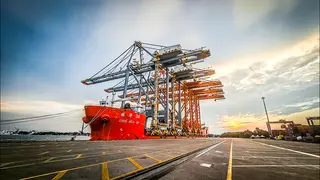Vinit Kumar is the first Indian Railway Service (IRS) official to become the chairman of Kolkata Port Trust in October. Two months later, he is busy mitigating the logistics gaps that earned Kolkata the tag of the costliest port in India.
“We are taking a host of measures to reduce the turnaround time, improve container handling per hour, and reduce transaction time through process simplification ensuring greater cost efficiency for users,” Kumar told BusinessLine in an interview.
He is not planning any mega projects. On the contrary, the costliest project envisaged is worth ₹16 crore. Each project comes with a definite completion schedule ranging from three to eight months.
“We will surely be a more efficient port by the end of next fiscal,” Kumar said.
Container handlingThe focus is on containerised cargo that constitutes 70 per cent of the cargo at Kolkata Dock System.
And, the nature of the projects initiated indicate prolonged neglect to the very basics of port functioning.
The container handling operations are done manually that slows down the velocity of movement and the port ends up handling barely 17-18 boxes an hour as against the hourly average of 22 to 25 in other ports.
The port is now asking service provider Bharat Containers to set up a GPS mapped zone and arming the staff with hand-held devices to identify the container’s location and destination. The project will be completed latest by March.
A ₹7-8 crore project is taken up to repair the 15,000 sq metre container yard to ensure faster operation of cranes and stackers and create a 30,000 sq metre space for stacking up containers.
A study will be initiated to suggest efficient ways of movement of trucks within the port. Discussions are on with IIT-Madras and the Central Road Research Institute. The study will be completed in the next six months.
“Kolkata is an old port that was planned for completely different cargo profile. We are trying to make it suitable for container handling,” he said.
Meanwhile, RITES will complete replacing approximately 12-km old rail lines inside the port.
Next in line on queue is a₹16-crore project to help loading a full rake at one-go. The port currently breaks a rake into two and loads them by turn, leading to high turnaround time. The project will take eight to nine months to complete; and till such time, KoPT will employ an additional engine to step up the loading rate.
Ro-Ro jettyOne major reason for the slow speed of container movement through Kolkata port is the restrictions imposed by the city traffic police on movement of long vehicles.
To solve the problem, the port is working with the Inland Waterways Authority of India (IWAI) to ferry containers by vessels across the river to Howrah.
The port has already given the requisite approvals to IWAI and vessel owners. To start with, the service can reduce truck movement through the city by 100 a day, which is eight per cent of the existing truck movement.
DigitisationThe other significant improvement in port operations will come through digitisation and simplification of procedure. A user currently needs to submit physical documents that travel through 22 different departments.
The port is planning to digitise the process and reduce the number of steps to four or five.
Kolkata Dock System currently handles 6.5 lakh containers a year. The aim is to handle 50,000 additional boxes through faster turnaround.








Comments
Comments have to be in English, and in full sentences. They cannot be abusive or personal. Please abide by our community guidelines for posting your comments.
We have migrated to a new commenting platform. If you are already a registered user of TheHindu Businessline and logged in, you may continue to engage with our articles. If you do not have an account please register and login to post comments. Users can access their older comments by logging into their accounts on Vuukle.